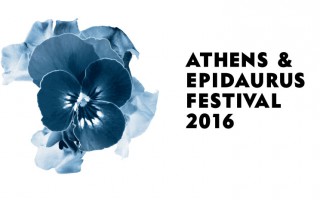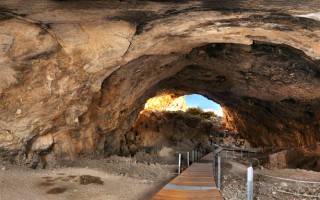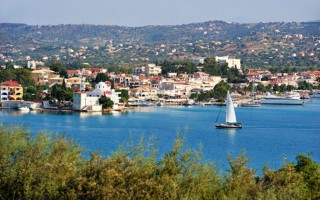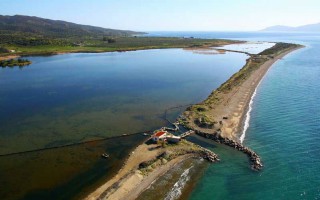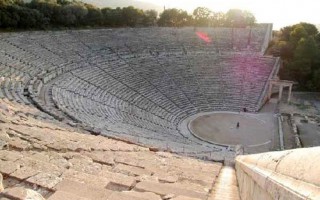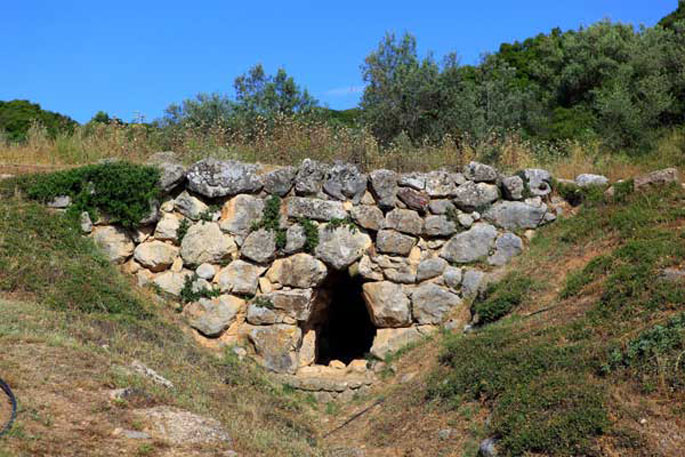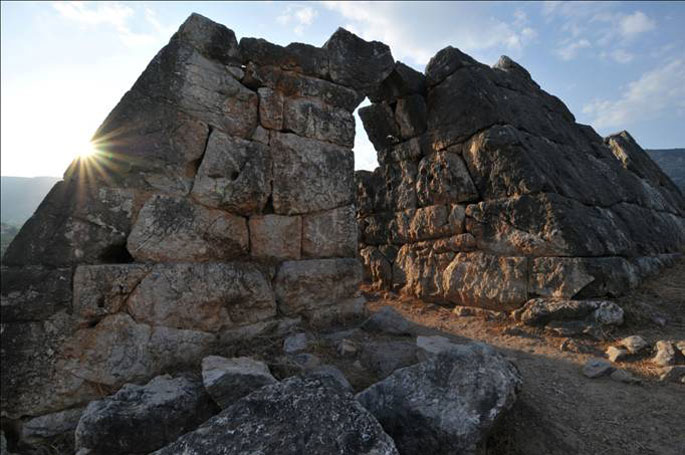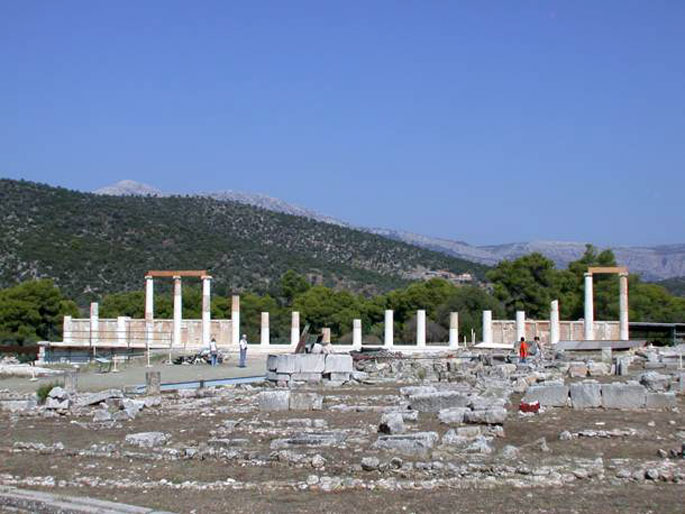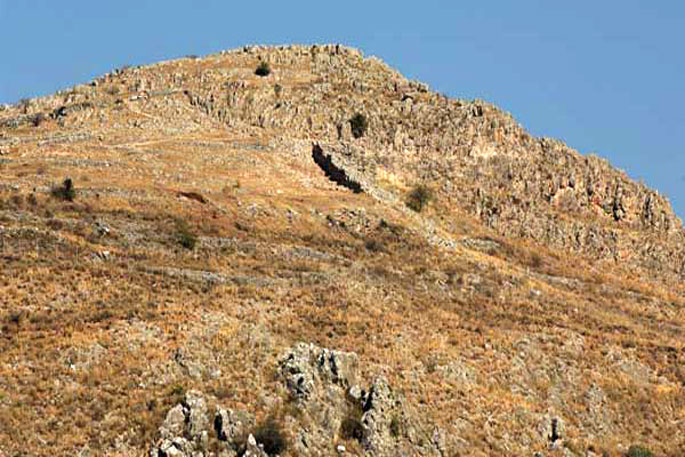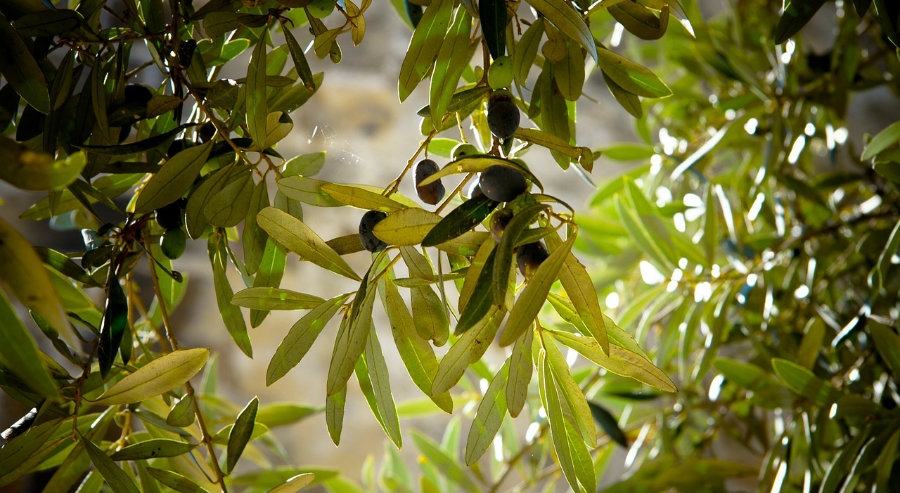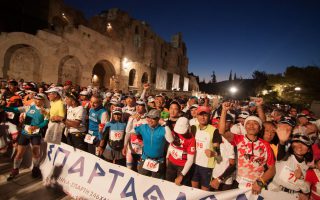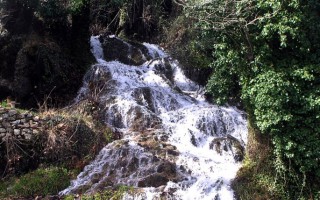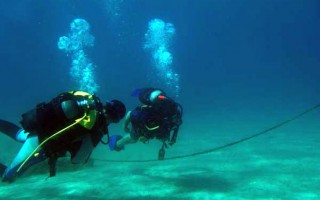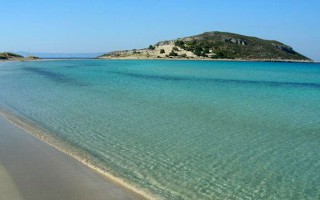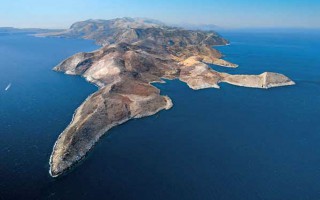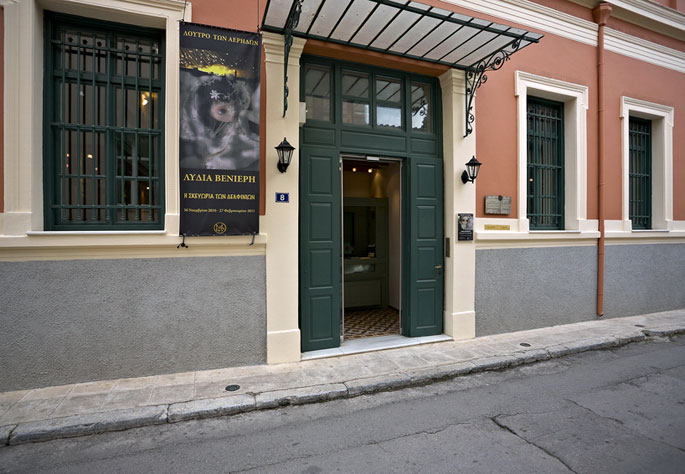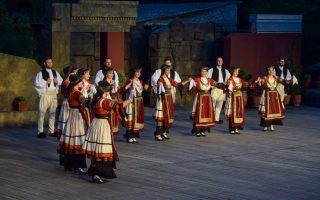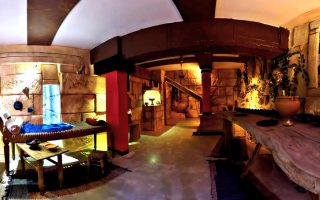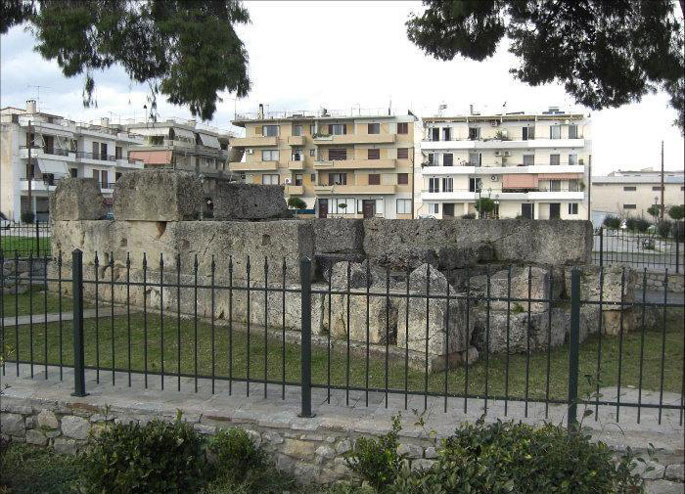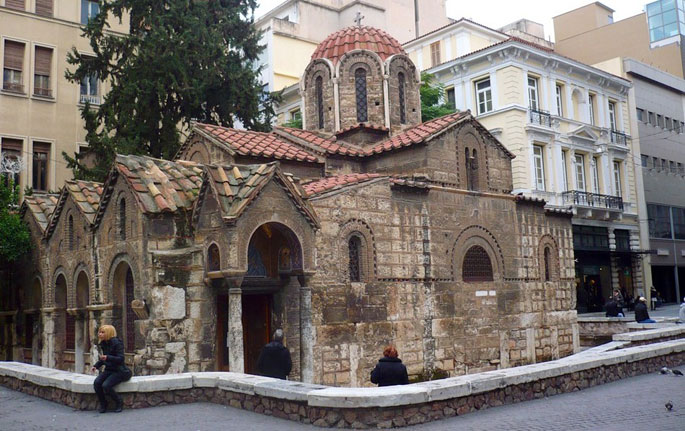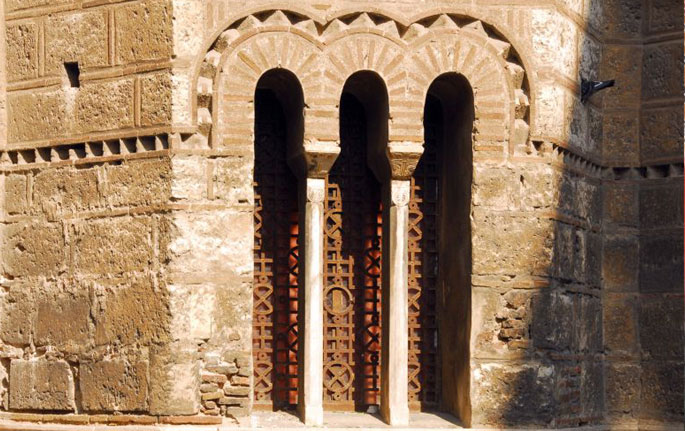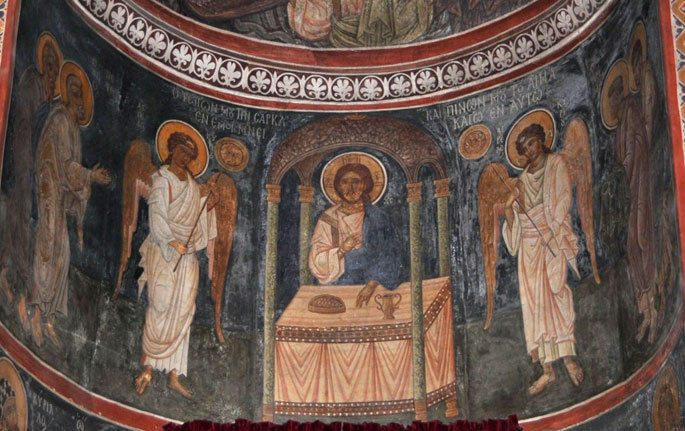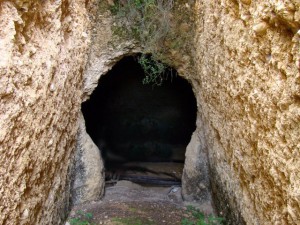 The archaeological site of the cemetery of Dendra with its royal tombs is already famous for the excavation of the bronze armor of Dendra, the most ancient armor found. The discovery brought to light the ancient burial habits and confirmed Homeric poems. The valuables, the everyday life objects, the elaborate jewelry and the figurines of reverence discovered document the wealth of that period. Recent excavations brought to light the remains of two horses and provided valuable insight on the rituals of the Mycenaean age.
The archaeological site of the cemetery of Dendra with its royal tombs is already famous for the excavation of the bronze armor of Dendra, the most ancient armor found. The discovery brought to light the ancient burial habits and confirmed Homeric poems. The valuables, the everyday life objects, the elaborate jewelry and the figurines of reverence discovered document the wealth of that period. Recent excavations brought to light the remains of two horses and provided valuable insight on the rituals of the Mycenaean age.
The archaeological site of the cemetery of Dendra is situated on a hill slope, on the west of the Mycenaean town of Midea, outside the village that bears the same name. It constitutes one of the biggest Mycenaean cemeteries of Peloponnesus.
 The excavations, that started during the spring of 1926 and were carried out in the following decades, brought to light the royal tombs; a tholos tomb and sixteen chamber tombs. The chamber tombs vary in shape and they were engraved in a soft rock on the hill slope. They consisted of three parts: the dromos, an inclining ramp, the stomion, narrow passage, and the chamber. The entrance to the tomb was walled by a dry masonry.
The excavations, that started during the spring of 1926 and were carried out in the following decades, brought to light the royal tombs; a tholos tomb and sixteen chamber tombs. The chamber tombs vary in shape and they were engraved in a soft rock on the hill slope. They consisted of three parts: the dromos, an inclining ramp, the stomion, narrow passage, and the chamber. The entrance to the tomb was walled by a dry masonry.
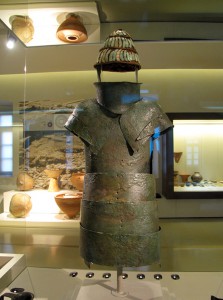 Among the findings at Dendra Cemetery, the one that stands out, is the oldest complete bronze armor. The necropolis uncovered the ancient burial habits of the Mycenaean age, and confirmed Homer, who exalted the Achaeans who wore bronze. Precious valuables, arms, tools, elaborate jewelry, figurines of worship and everyday life objects made of gold, silver, bronze, ivory and other materials confirm the wealth of that period. Recent excavations brought to light two prehistoric domestic horses, possibly battle steeds, which griped the archaeological community.
Among the findings at Dendra Cemetery, the one that stands out, is the oldest complete bronze armor. The necropolis uncovered the ancient burial habits of the Mycenaean age, and confirmed Homer, who exalted the Achaeans who wore bronze. Precious valuables, arms, tools, elaborate jewelry, figurines of worship and everyday life objects made of gold, silver, bronze, ivory and other materials confirm the wealth of that period. Recent excavations brought to light two prehistoric domestic horses, possibly battle steeds, which griped the archaeological community.
All of the findings attest that the site was occupied between 1500 and 1180 B.C. probably pertaining to the nearby acropolis of Midea. They are exposed in the archeological museum of Nafplion and the National Archeological Museum of Athens.
Source: www.mythicalpeloponnese.gr
The megalithic Mycenaean bridge of Kazarma stands imposing in the village Arcadicon and constitutes the oldest bridge in Europe that is still in use. It must have been constructed back in 1300 B.C. and it used to join Epidaurus, Mycenae and ancient Tiryns.
In the village called Arcadikon, on the way which joins Nafplion to Epidaurus predominates the Mycenaean “Bridge of Kazarma” , the oldest bridge in Europe. This imposing bridge, that constitutes another great creation of the Mycenaean age, was constructed around 1300 B.C. For its construction massive uncut limestone blocks were used, in accordance with the Mycenaean construction style that ordered no use of adjoining material. It is 22m long 5,6 m wide and 4m high, and based on remains of a still visible road suitable for vehicles across the bridge, it had been used to connect Epidaurus, Mycenae and ancient Tiryns. At the same time, it was also used as a dam for the raging torrents. The special characteristic of this bridge compared to others is the oblique wedge that holds the sides of the triangular passage in place.
Today, this arched bridge still in use by the inhabitants of the region, and four more placed close to each other, are there to remind us that on this specific land the glorious Mycenaean civilization was once born.
Source: www.mythicalpeloponnese.gr
The Pyramid of Hellinikon is located near the city of Argos, on an ancient road which once led from Argos to Tegea. The pyramid is preserved in good condition and it consists of a unique phenomenon and an archaeological mystery.
The Pyramid of Hellenikon is situated nine kilometres away from Argos, near the springs of the Erasinos river and on the main arterial road which in antiquity led from Argos to Tegea. The pyramid is a live proof of mythology which suggests that there was a relation between the land of Argos and the Egyptian civilization. There is a controversy about the date of this structure.
Based on the excavations carried out, it dates back to the late 4th century, but according to archaeologists, using new methods, it might overlap the construction of the pyramids in Egypt. The first theory seems to prevail.
 The Pyramid of Hellenikon is situated nine kilometres away from Argos, near the springs of the Erasinos river and on the main arterial road which in antiquity led from Argos to Tegea. The pyramid is a live proof of mythology which suggests that there was a relation between the land of Argos and the Egyptian civilization. There is a controversy about the date of this structure. Based on the excavations carried out, it dates back to the late 4th century, but according to archaeologists, using new methods, it might overlap the construction of the pyramids in Egypt. The first theory seems to prevail.
The Pyramid of Hellenikon is situated nine kilometres away from Argos, near the springs of the Erasinos river and on the main arterial road which in antiquity led from Argos to Tegea. The pyramid is a live proof of mythology which suggests that there was a relation between the land of Argos and the Egyptian civilization. There is a controversy about the date of this structure. Based on the excavations carried out, it dates back to the late 4th century, but according to archaeologists, using new methods, it might overlap the construction of the pyramids in Egypt. The first theory seems to prevail.
There are many theories on its use. The Greek traveler, Pausanias wrote in the 2nd century A.D. that the Hellinikon pyramid was a common tomb for soldiers. Others refer to the pyramid as a fryctoria, a tower used to send smoke signals. At the present it is believed that the pyramid served as a small observatory to control the surrounding area.
It consists of a unique architectural phenomenon and it is preserved in good condition. It reminds its visitors of the history of Argos.
Source: www.mythicalpeloponnese.gr
The sanctuary of Asclepius with its healing waters is situated between the hills of Titthios and Kynortio. For many centuries it constituted a cultural, religious and political center of great importance. It was here that the king of Epidaurus, Malos, founded the sanctuary of Apollo Maleatas and then his granddaughter, Koronis, gave birth to Apollo’s son, the god Asclepius. Thousands of sick people passed through the gates of the sanctuary in order to be cured by the god Asclepius. Alongside the sanctuary the visitor can admire the baths, the gymnasium, the tholos, the abaton, the sanctuary of Asclepius, the palaestra, the Stadium and many other monuments.
The ancient theater of Epidaurus is located in this archaeological site. The Sanctuary of Asclepius is located between the hills Titthio and Kynortio which were named after a nursing goat and a guardian dog that saved little Asclepius from hunger and beasts.
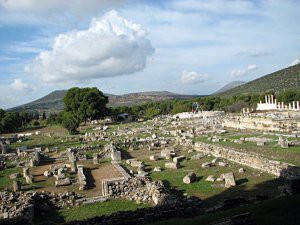 The sanctuary enjoyed great fame and was considered of the most important healing center of the time. It was the birthplace of medicine that was believed to be given to the people as knowledge from the god and it spread to the 300 Asklepeia in the Hellenic and the Roman world.
The sanctuary enjoyed great fame and was considered of the most important healing center of the time. It was the birthplace of medicine that was believed to be given to the people as knowledge from the god and it spread to the 300 Asklepeia in the Hellenic and the Roman world.
The adoration of medicine in this region did not start from Asclepius. Centuries before, between the 16th and 11th century B.C. on mount Kynortion behind the ancient theater there used to be an unusually large sanctuary dedicated to a healing goddess. At the same mount, in 800 B.C, according to the mythology, the king of Epidaurus, Malos, founded a sanctuary dedicated to Apollo Maleatas and later his granddaughter, Koronis, daughter of the king of Thessaly, Flegyas, gave birth to Asclepius, a fruit of her love with Apollo. During the 6th century B.C. the fame of Asclepius spread beyond the limits of Argolida and a second sanctuary was founded, one kilometer southwest, the Asklepion.
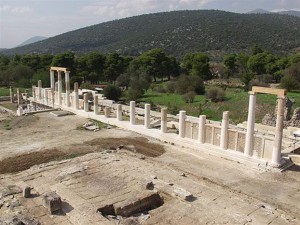 The ritual of healing gave great importance to the purifying significance of the water. In the following centuries, the sanctuary became very famous, and the worship continued, despite the destructions during the Roman period, until the official ban on ancient pagan religions in 426 A.D. by Theodosius the Great. Between 522 and 551 A.D. the site was abandoned following the destructive earthquakes.
The ritual of healing gave great importance to the purifying significance of the water. In the following centuries, the sanctuary became very famous, and the worship continued, despite the destructions during the Roman period, until the official ban on ancient pagan religions in 426 A.D. by Theodosius the Great. Between 522 and 551 A.D. the site was abandoned following the destructive earthquakes.
Panagis Kavvadias excavated the site in 1881, uncovering the sanctuary’s most important monuments.
Several buildings surround the temple. These include the Archaeological Museum, the Hostel, the Purifying Baths, and then the gymnasium and a Roman Odeon built in its yard. In the northeast part one can see the so-called Stoa of Kotyos, the temple of Artemis and the doric temple of Asclepius. Next to the temple lies the Abaton, where the patients’ hypnosis took place, the Tholos, a circular peristyle building, the Roman baths, a sacred road that lead to the Propylaia and the ruins of an early orthodox church. Also visible are the remains of the arena and the stadium. The most significant monument of the site is the well renowned Ancient Theater of Epidaurus, an architectural masterpiece.
Source: www.mythicalpeloponnese.gr
On the south of Mycenae, on the slopes of the hill called Aetovouno or Euboea, built on three hills, lies the Heraion, a very important temple dedicated to Hera. It was in this temple that every two years following every Olympiad the panhellenic ancient festival of Heraia took place. This magnificent sanctuary, flourished from the 5th century B.C until the Roman age and it consisted of the official religious center of the region of Argos. Apart from the Heraion the site has ruins of Roman baths and other buildings.
The Heraion is located between the archeological site of Mycenae and the city of Argos, on the slopes of the mountain called Aetovouno or Euboea. It was a place of worship dedicated to Hera, protector of Argos. This imposing temple was built in the 8th century B.C. In the early 7th century it was the official religious center of the region of Argos and it flourished from the 5th century B.C. until the Roman period. According to the tradition it was created by the hero Argos or Phoroneas, son of Inachus.
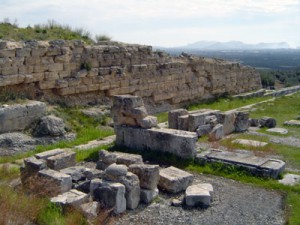 The Heraion consists of three levels. During the first centuries of its use, the place of worship was situated on the upper level and it was protected by a cyclopean wall. During the 6th century B.C two Doric style stoas were constructed on the south of the middle terrace. In 423 B.C., though, the first temple burned down and a second temple was built by Eupolemos. This second temple was constructed on the middle terrace between the “west building” hosting the symposiums and the “east building”.
The Heraion consists of three levels. During the first centuries of its use, the place of worship was situated on the upper level and it was protected by a cyclopean wall. During the 6th century B.C two Doric style stoas were constructed on the south of the middle terrace. In 423 B.C., though, the first temple burned down and a second temple was built by Eupolemos. This second temple was constructed on the middle terrace between the “west building” hosting the symposiums and the “east building”.
In this temple was the chryselephantine statue of Hera, a work of Polykleitos, a wooden statue of the goddess taken from Tiryntha and a chryselephantine statue of Eve created by Naukides. There were other statues representing heroes of the region and priestesses of Hera at the Propylaea (entrance) of the temple. The sack of Troy and the birth of Zeus were depicted on the impressive pediments, parts of which are exposed in the National Archaeological Museum of Athens.
It was in this temple that every second year after each Olympiad the Heraia or Hekatombaia were celebrated, a festival in honor of the goddess and one of the biggest festivals in Argos. Apart from the festival, games also took place, and the winners were awarded coppery objects. The existence of this festival is documented by Herodotus when he recounts the sacrifice of two brothers, Kleobis and Biton who dragged the cart of their mother, the priestess of Hera Argeia, while the oxen assigned to the task were used for another work.
All the priestesses of the temple had a lifelong service and were highly appreciated by the people of Argos. The importance of the sanctuary is also attested to by the fact that the calculation of the local date was based on the year the service was assigned to each priestess and on the offerings of Nero and Hadrian. Catharsis ceremonies took place in the temple, in the water of river Eleftherios. The excavations brought to light an Apollo temple, Roman baths, a cemetery and the Heraion.
Source: www.mythicalpeloponnese.gr
Τhe Mycenaean acropolis of Midea, the third fortified acropolis of Argolida, is related to many myths. It played the role of a craft industry, administrative, military and financial force. It was built on a hill and, according to findings dating to the 13th century, it was inhabited since the prehistoric age. The “cyclopean wall” and the two gates, one on the east and one on the west, protect a 24.000m² region. The huge tunnel, the bastion and a number of houses with fine frescos fascinate the visitor. Furthermore the wealth and the glory of the acropolis are documented by the numerous archaeological findings. Their study greatly contributed to the decoding of the script Linear B demonstrating the continuity of the Greek language.
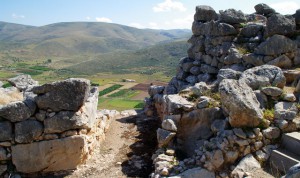 Between Mycenae and Tiryns, built on a 2.70m high ancient hill, rises the third most important acropolis of Argolida, the Mycenaean acropolis of Midea. According to the legend this land has been founded by king Perseus and consists of Alkmini’s, Hercules’ mother’s, homeland. Another legend states that this land was the prison where Hippodamia, Pelops’ mother, was punished, and the land was named after the queen. It was built to control the ancient passage to Epidaurus. Greek and foreign researchers have underlined its strategic position; the acropolis controls the plain of Argolida.
Between Mycenae and Tiryns, built on a 2.70m high ancient hill, rises the third most important acropolis of Argolida, the Mycenaean acropolis of Midea. According to the legend this land has been founded by king Perseus and consists of Alkmini’s, Hercules’ mother’s, homeland. Another legend states that this land was the prison where Hippodamia, Pelops’ mother, was punished, and the land was named after the queen. It was built to control the ancient passage to Epidaurus. Greek and foreign researchers have underlined its strategic position; the acropolis controls the plain of Argolida.
For many centuries, it constituted an important industial, administrative, military and financial centre. This is documented by the numerous findings brought to light by the excavations carried out in 1939.
The ceramic findings of the late Helladic period indicate that the ancient hill was inhabited from the prehistoric age. The “cyclopean walls” surround the hill and protect a 24.000m² region, controlling the upper acropolis and the lower sections of the hill with its constructions. One side of the hill is steep consisting thus of a natural fortress and inaccessible barrier for the enemies. Two gates built with natural limestone, on the eastern and the western side, complete the fortification. An underground megalithic tunnel documents that there was a developed water and drainage system and it demonstrates a specific and detailed architectural design, as it resembles the respective constructions of Tiryns.
A powerful earthquake and the subsequent fire put an end to the Mycenaean Midea. This was documented by the skeleton of a girl, found at the eastern gate, covered by huge stones. The buildings had been repaired and reused in the 12th century BC.
At the western gate, a bastion, an outpost and a number of houses were uncovered. Pieces of the walls revealed that they had a fine decoration. The findings of semi-precious stones, ceramic and stone tools, armours and gold jewellery moulds document that the buildings were used as storage rooms and laboratories, proving Mideas’ industrial strength. One of the most important findings, the large rare idol on wheels depicting a goddess, revealed the religious practices of this period. Seals and inscribed jars contributed to the decoding of the Linear B, documenting the historical unity and continuity of the Greek language.
Source: www.mythicalpeloponnese.gr
Three days festival dedicated to the laconic olive oil and the edible olive, takes places every August in Sellasia of the Municipality of Sparta. In this festival various producers with their own pavilions take part, but also production firms of the prefecture in order to highlight and promote the laconic olive oil.
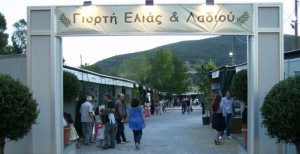 The exhibition is organized by the Municipality of Sparta and the non-profit organization “Olive and Olive Oil Festival”. It includes various cultural events, like tributes, product tasting and folk music. There are also conferences, speeches and conventions about agricultural and rural development, the organic agriculture, the production, the market, the history, the use and the quality characteristics of the olive, the olive oil and the other laconic products.
The exhibition is organized by the Municipality of Sparta and the non-profit organization “Olive and Olive Oil Festival”. It includes various cultural events, like tributes, product tasting and folk music. There are also conferences, speeches and conventions about agricultural and rural development, the organic agriculture, the production, the market, the history, the use and the quality characteristics of the olive, the olive oil and the other laconic products.
The festival is organized under the auspices of the Ministry of Production, Rural Development, Industry and the Environmentand the Province of Peloponnese.
Source: www.mythicalpeloponnese.gr
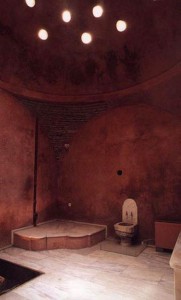 The Turkish bath of the Aerides is located on Kyrristou street in Plaka. Built during the years of the Ottoman occupation, the “Ibn Efendi Turkish Bath” was open to the public. Extensively damaged during the siege of the Acropolis by Kioutahi Pasha in 1827, it was later repaired and modernized by King Otto. Following World War II, the bath continued operations until 1960, when it was abandoned.
The Turkish bath of the Aerides is located on Kyrristou street in Plaka. Built during the years of the Ottoman occupation, the “Ibn Efendi Turkish Bath” was open to the public. Extensively damaged during the siege of the Acropolis by Kioutahi Pasha in 1827, it was later repaired and modernized by King Otto. Following World War II, the bath continued operations until 1960, when it was abandoned.
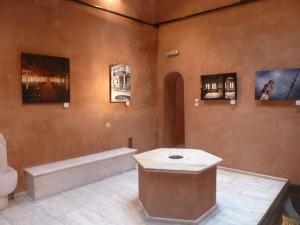 During the 1980’s and the 1990’s, the Ministry of Civilization performed several interventions and restructuring work, in order to restore the building and turn it into an exhibition venue. Today, visitors can see how a Turkish bath operated during the time of the Ottoman occupation, as well as subsequent eras. The building also houses an annex of the Museum of Hellenic Folk Art.
During the 1980’s and the 1990’s, the Ministry of Civilization performed several interventions and restructuring work, in order to restore the building and turn it into an exhibition venue. Today, visitors can see how a Turkish bath operated during the time of the Ottoman occupation, as well as subsequent eras. The building also houses an annex of the Museum of Hellenic Folk Art.
Source: www.athensattica.gr
Excavations carried out during the previous century, north of the modern town of Sparta, brought to light an impressive construction. The edifice that dates back to the 5th century B.C. was made from large limestone. Waldstein, who carried out the excavations in 1892, initially thought it was a small temple. Although its use is not yet verified, it is believed to be the tomb of Leonidas. According to Pausanias, it was here that the remains of the legendary king of Sparta were transferred and buried after the battle in Thermopylae. The tomb of Leonidas is the only preserved monument of the Ancient Agora.
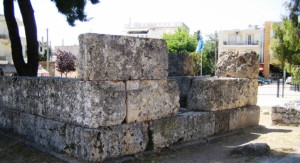 The tomb of Leonidas, north to the modern town of Sparta, is an emblem and an important monument, as it is the only monument preserved from the Ancient Agora. Also known and as Leonidaion, excavations of the construction were carried out by Waldstein in 1892. The impressive edifice (12.5 × 8.30 m) has the form of a temple probably dating back to the late 5th century B.C.. It was made of massive limestone and its interior was divided in two connected chambers. The eastern chamber was 3.15 meters long, had the form of a vestibule and was ornate with columns.
The tomb of Leonidas, north to the modern town of Sparta, is an emblem and an important monument, as it is the only monument preserved from the Ancient Agora. Also known and as Leonidaion, excavations of the construction were carried out by Waldstein in 1892. The impressive edifice (12.5 × 8.30 m) has the form of a temple probably dating back to the late 5th century B.C.. It was made of massive limestone and its interior was divided in two connected chambers. The eastern chamber was 3.15 meters long, had the form of a vestibule and was ornate with columns.
Until today, it is not known what the edifice was used for. It is believed to be a cenotaph, while many researchers share the opinion that it is the temple of Karneio Apollo. Although there is no indication on the correlation between the temple and the legendary king of Sparta, according to local tradition and the travel writer Pausanias, the remains of Leonidas were transferred and buried there. It is because of this, that the locals believe it to be the tomb of Leonidas. According to Pausanias the tomb was situated to the west of the Agora, opposite to the theater, and hosted games once a year.
Source: www.mythicalpeloponnese.gr
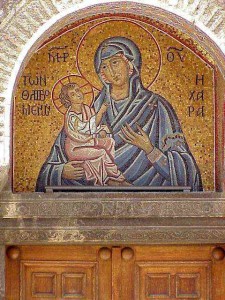 The byzantine church of Kapnikarea is one of the major landmarks of Athens’ Byzantine past. Dating from the 11th century, it is dedicated to the “Presentation of the Virgin to the Temple,” and lies in the middle of Ermou street. It is believed that the church was built over an older, Christian temple, commissioned in the 5th Century A.C. by the Athenian Empress of Byzantine, Eudokia, wife of Emperor Theodosius the Younger. Constructed atop the foundations of the ancient temple of Athena or, perhaps, Demeter, it is today owned by the University of Athens.
The byzantine church of Kapnikarea is one of the major landmarks of Athens’ Byzantine past. Dating from the 11th century, it is dedicated to the “Presentation of the Virgin to the Temple,” and lies in the middle of Ermou street. It is believed that the church was built over an older, Christian temple, commissioned in the 5th Century A.C. by the Athenian Empress of Byzantine, Eudokia, wife of Emperor Theodosius the Younger. Constructed atop the foundations of the ancient temple of Athena or, perhaps, Demeter, it is today owned by the University of Athens.
Constructed as a domed, cross-in-square complex, the three sections of the church were built at separate times; In the early 20th Century, the chapel of St. Barbara was added to the northern section of the church. Many of the interior murals were painted by famed artist, Fotis Kondoglou. The temple owes its name to its first owner who, according to tradition, collected the “Tobacco Tax” (kapnikos foros) in the city. Yet another tradition is connected to the church’s older name, “Kamouharea,” the famous silk cloth workshops (kamouhades) that operated in the area.
Source: www.athensattica.gr


